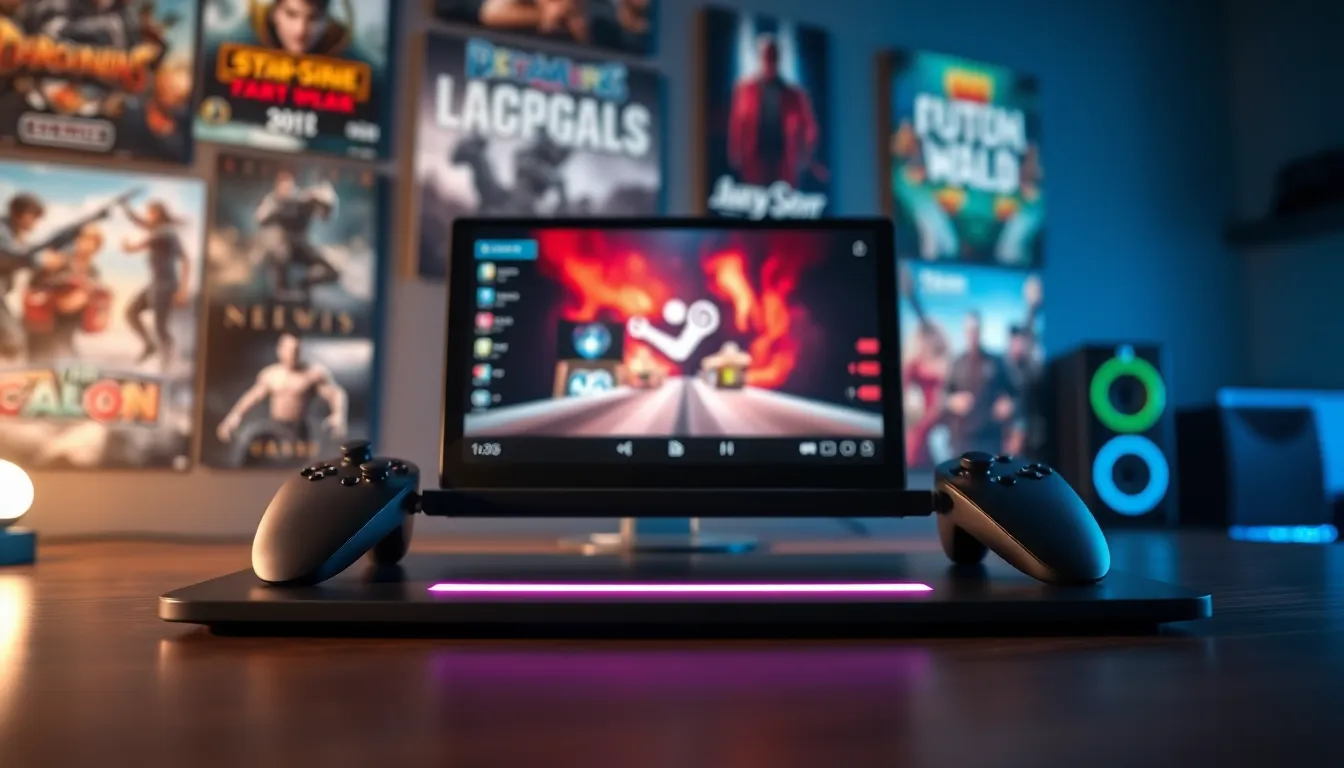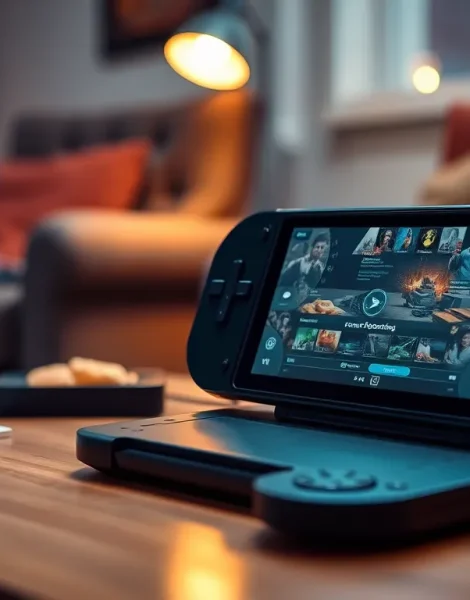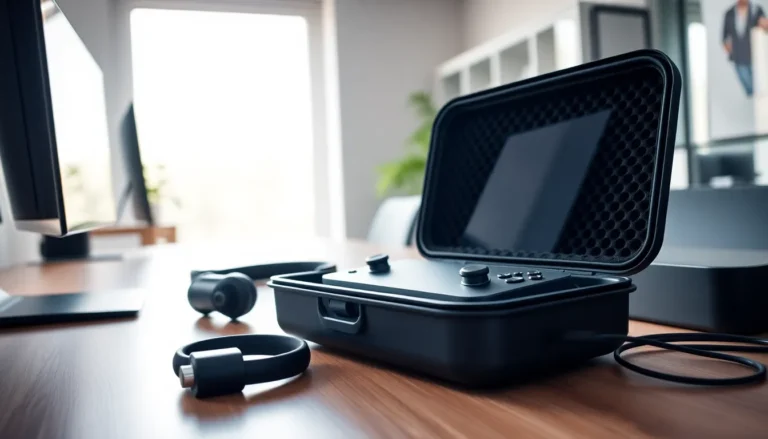The Steam Deck has taken the gaming world by storm, blending the power of a PC with the portability of a handheld console. But what if players want to share their epic gaming moments with the world? Enter screen recording—a feature that turns those thrilling victories and hilarious fails into shareable content.
Imagine capturing that jaw-dropping boss fight or the time you accidentally launched yourself off a cliff. With the right tools, players can immortalize their gaming glory and entertain friends or followers. Whether it’s for bragging rights or just a good laugh, knowing how to screen record on the Steam Deck is a game changer. So grab your Deck and get ready to show off your skills—because who wouldn’t want to relive those unforgettable moments?
Table of Contents
ToggleOverview of Steam Deck Screen Recording
Screen recording on the Steam Deck enables players to capture gameplay effortlessly. This feature supports high-quality recordings, making it suitable for sharing on platforms like Twitch or YouTube. Users can record full gameplay sessions, with options for adjusting quality settings based on personal preferences.
Accessing screen recording is simple. Players can initiate recording via a dedicated button combination or through the Steam Deck’s Quick Access menu. A visual indicator appears to confirm that recording is in progress, allowing players to focus on their game without interruption.
The format for saved recordings is typically MP4, ensuring compatibility with many editing tools. Steam Deck offers no intrinsic limit on recording length; however, storage availability dictates overall capacity. Regularly checking available storage prevents losing recordings due to insufficient space.
A range of settings enhances the recording experience. Players can choose resolution, frame rate, and bitrate to optimize their recordings based on their device’s capabilities. Adjusting these parameters can improve the quality and smoothness of footage capturing fast-paced action without lag.
Understanding how to edit recordings enhances content for sharing. Players often use various video editing programs to refine their captures, adding effects or commentary. Editing elevates the viewing experience, providing audiences with polished and engaging content.
With the rise of online gaming communities, screen recording fosters connection. Players share their clips on social media platforms, bolstering camaraderie and showcasing achievements. This interaction often leads to discussions, strategies, and new friendships formed around shared gaming experiences.
Setting Up Your Steam Deck for Screen Recording

Setting up your Steam Deck for screen recording ensures a seamless gaming experience. Follow these steps to get started.
Required Software and Tools
Using the built-in screen recording software is essential. This function comes pre-installed on the Steam Deck. Players don’t need to download external applications. Additional tools may enhance the experience, such as OBS Studio or ShadowPlay, for advanced recording options. These programs allow more flexibility and customization. They’re compatible with the Steam Deck when connected to a PC. For basic recording, the native software suffices. It offers solid quality suited for sharing on platforms like Twitch or YouTube.
Configuring Settings for Optimal Performance
Configuring settings ensures high-quality recordings. Adjust resolution to match the display capabilities of the Steam Deck. Selecting a resolution of 720p or 1080p typically provides a good balance between clarity and performance. Choose a frame rate between 30 and 60 FPS for smoother playback. Bitrate settings impact video size and quality; higher bitrates result in better quality. Consider the available storage space when selecting optimal settings. Access these configuration options through the Quick Access menu. Regularly test and tweak settings for the best recording results.
How to Record Your Screen on Steam Deck
Recording gameplay on the Steam Deck is a simple process that captures memorable moments effortlessly. Players can follow a few straightforward steps to ensure they record their screen effectively.
Step-by-Step Recording Instructions
- Press the Steam button to open the menu.
- Navigate to the Quick Access menu using the designated button combination.
- Select the screen recording option by choosing the appropriate icon.
- To start recording, press the record button, and a visual indicator appears on the screen.
- Whenever finished, press the record button again to stop the recording.
Following these steps ensures gameplay is recorded in MP4 format for easy sharing on social platforms.
Tips for Better Quality Recordings
Select resolutions of 720p or 1080p to enhance visual clarity. Maintain frame rates of 30 to 60 FPS for smooth playback. Adjust bitrate settings to manage file size while preserving quality. Ensure ample storage space is available for extended recordings. Using good lighting and minimizing background distractions enhances the overall video quality. Regularly test settings to determine what works best for individual gameplay styles.
Incorporating these tips leads to polished recordings that capture the excitement of gaming sessions.
Troubleshooting Common Issues
Screen recording on the Steam Deck can sometimes present challenges. Addressing key issues helps improve the recording experience significantly.
Audio and Video Sync Problems
Audio and video sync problems frequently occur in recordings. Players notice that sounds do not align with the corresponding visuals. To fix this, adjusting the recording settings might help. Reducing the resolution or frame rate could lead to better synchronization. In some cases, editing software offers features to correct sync issues during post-production. Utilizing tools designed for precise editing also resolves discrepancies effectively. Regularly testing different settings ensures optimal synchronization before recording critical gameplay moments.
Performance Lag During Recording
Performance lag during recording impacts gameplay and recording quality. Players may experience frame drops or stuttering in their gameplay. Closing background applications often improves performance. Adjusting the recording quality settings can also alleviate lag issues. Lowering the resolution or frame rate while recording may optimize system resources. Ensuring ample storage space prevents slowdowns caused by low memory. Regular system updates also enhance overall performance, providing a smoother experience while recording impressive gaming feats.
The Steam Deck’s screen recording feature empowers gamers to capture their adventures with ease. By utilizing the simple button combinations and settings available, players can create high-quality content that showcases their skills and experiences.
With the ability to edit and share recordings on popular platforms, the possibilities for connection and creativity are endless. As players continue to explore this feature, they’ll find new ways to engage with their gaming communities and enhance their online presence.
Ultimately, screen recording on the Steam Deck is not just about preserving memories; it’s about building a vibrant community around shared gaming experiences.









